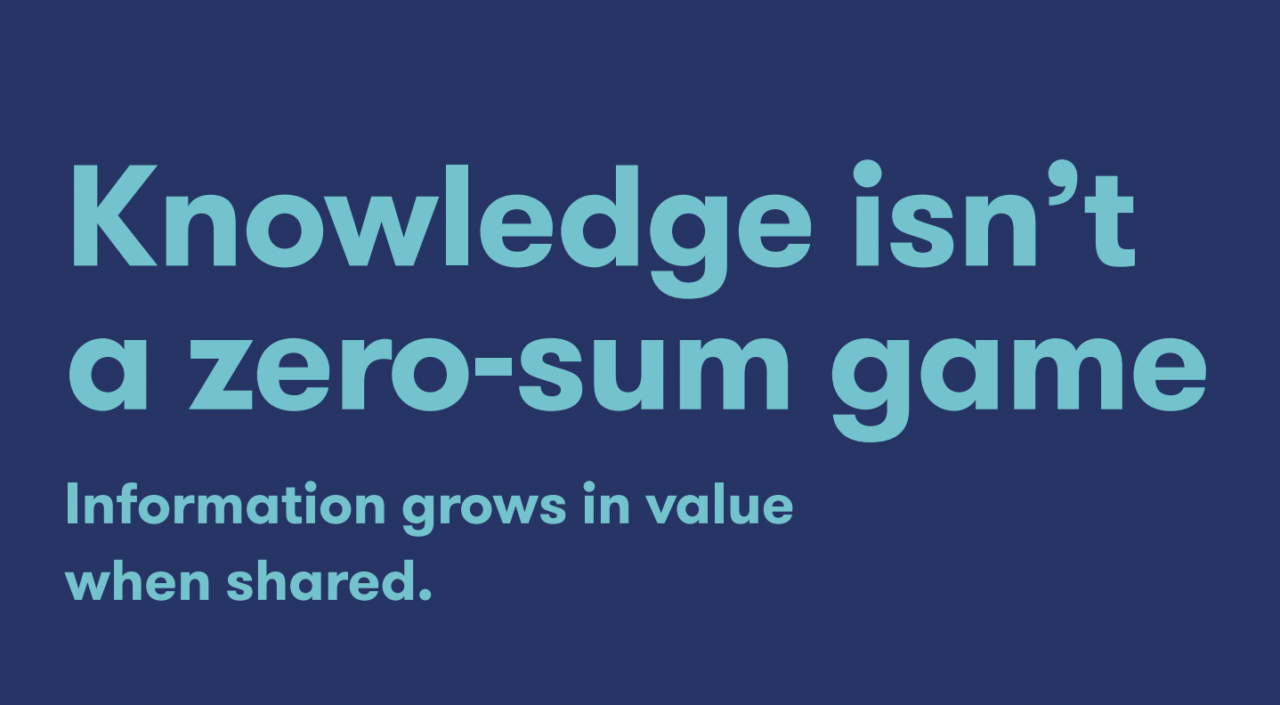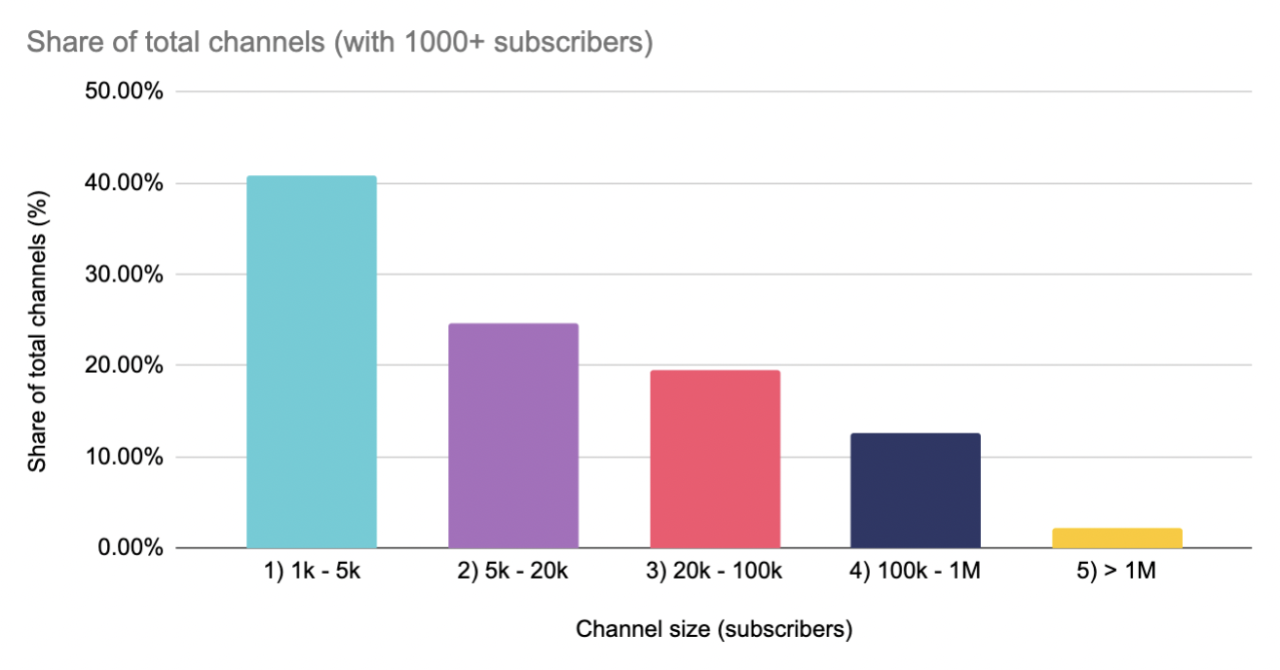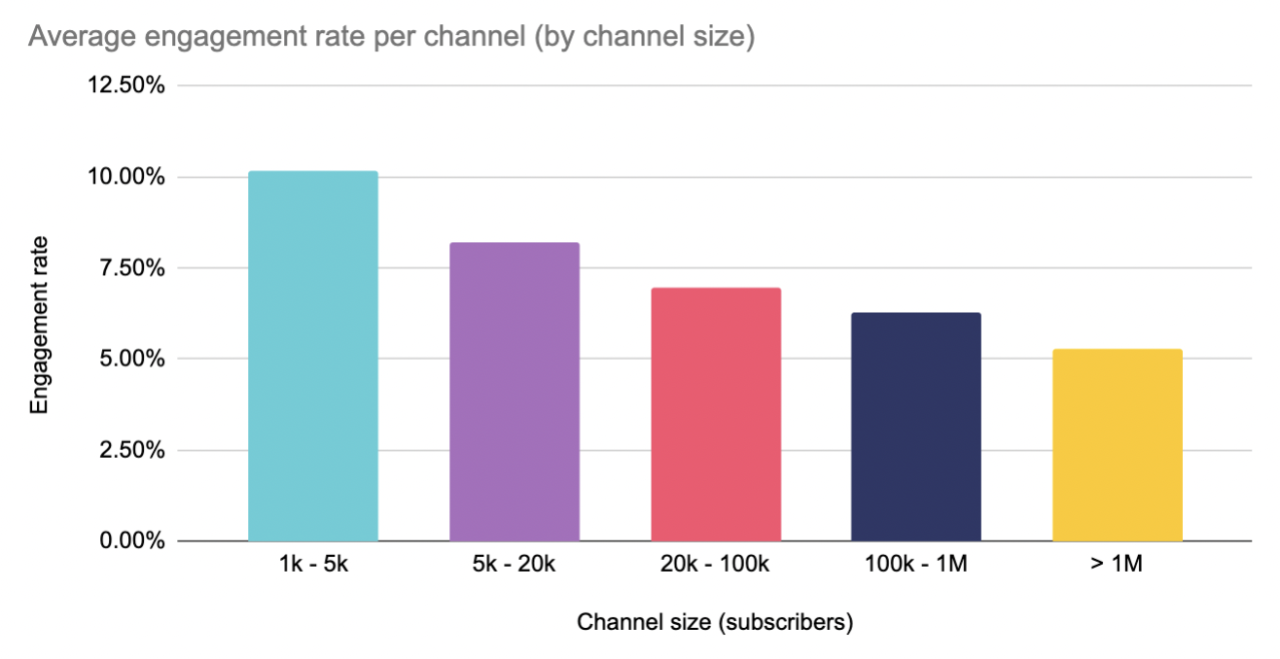In the five years that we’ve been connecting brands with creators and their audiences, we’ve seen the creator marketing world both change dramatically in some ways, and stay stagnant in others.
The creator industry has experienced explosive growth. By some estimates it has grown fivefold in the past five years and the growth will remain strong. Increasing privacy awareness has encouraged brands to shift their budgets from traditional online marketing channels to creator sponsorships. With performance marketers joining in, the industry has started caring about scalability, predictability and repeatability much more than before.
“Fair & transparent” and “Knowledge isn’t a zero sum game” being two of our company tenets, I wanted to share a few topics discussed during our recent management offsite. Based on everything we’ve learned in the course of paying out millions of dollars in sponsorships to our network of over 15,000 creators, these are the five main trends shaping the world of creator marketing right now.

1. More polished doesn’t mean better ROI
We’re all heavy social media users, and it’s easy to think that therefore we know exactly what works online. The industry is full of middlemen who have built their careers on having the magic touch for picking just the right creators and telling them exactly what to do to produce the best results for your sponsorship.
Data, however, does not support this idea. When we compare the subjective assessment of sponsored content quality – of Matchmade employees or brands we work with – we see a slight negative correlation between perceived quality and marketing conversions. On average, sponsorships perceived as low quality have performed slightly better than the “good ones”.
Analyzing our sponsorship data, it’s clear that subjective perceptions of creator fit or sponsorship quality of individual sponsorships have little to do with budget-level ROI, whereas the ability to allocate and price sponsorships so that you reach the desired audience at the desired price point drives creator marketing ROAS. And the more creators you are able to work with, the higher the likelihood of producing viral hits with outsized returns.
2. Industry fragmentation is preventing workflow innovation
One of the peculiarities of our industry is that it’s a creative space where people often spend their time on repetitive manual tasks – like browsing lists of creators to identify just the right one and micromanaging their content creation efforts. Our efforts to improve and scale typical industry workflows have often been met with reluctance to try new ways of doing things. Why?
From a brand’s point of view, the industry is made up of thousands of different agencies, managers, networks and platforms. More often than not, these players differentiate themselves in terms of the creators they have access to. Since the #1 priority for brands is the to reach their target audience, they will work with anyone who is able to allocate budgets at acceptable prices to creators reaching that audience.
Supply fragmentation creates a situation where different service providers must keep their brand-facing workflows compatible, because it’s not worthwhile for brands to change their workflows for one partner – unless that partner is responsible for a large part of the supply the brand wants to work with.
Brands-side workflow innovation will be frustratingly slow until someone with the willingness and ability to innovate is able to build a dominant market position with access to a significantly larger network of creators than anyone has today.

3. Rapid technological innovation happens on the creator side
Fragmentation isn’t the only thing slowing down brand-side workflow innovation. Even innovative brands are constrained by monthly budgets, internal processes, reporting requirements, etc. Iteration happens in monthly cycles at best. Tech-enabled services like Matchmade only gain a minor competitive advantage over more traditional players because of slow iteration speed.
On the creator side it is a completely different story. We send out hundreds or thousands of sponsorship offers every day, and every offer is an opportunity to try something new. Industry players with significant technological capabilities will scale the fastest by investing their R&D budgets into workflow improvements, tools, data, and automation for the creator side of the business, and not pushing on brands-side workflow innovation until they’ve achieved a dominant market position on the creator side.
4. Whoever wins the trust of small and growing creators, wins the market
As clunky as it sounds, the true value creators of the creator economy are the creators themselves. The industry wouldn’t exist if it wasn’t for the individuals who spend their time creating something enjoyable and making it publicly available.
Because of the manual workflows of the industry, there is a vast and growing mass of creators who are big enough to start monetizing their work, but aren’t big enough to get real representation from a manager or an agency. Whoever can help these creators turn their creative efforts into monetizable businesses early on will earn their trust, and will over time build a critically large supply of creators that allows them to push for new approaches on the brands side as well. Trust earned early on will persist, and there is no reason for these creators to look elsewhere as long as the tools offered to them continue to scale and evolve with their channels.
Managers and agents will continue to be relevant for the larger creators, but there is no reason why the majority of the creator middle class wouldn’t simply work with platforms like Matchmade to run their creative businesses.

5. Small and growing creators will accept most legitimate sponsorship offers
Whenever we ask the creators we work with how we can best help them, the #1 answer is always “more deals.”
The non-scalable workflows of most brands, managers and agencies mean that small to midsize creators have significantly poorer access to sponsorship deals than large creators, despite reaching more consumers as a group and having more engaged followers than the big creators. Traditional influencer marketing workflows simply don’t scale to working with hundreds or thousands of creators on a regular basis, so brands end up prioritizing large creators with lots of reach.
There are millions of small and growing creators actively looking to work with brands, which represents a massive opportunity to forward-looking brands willing to develop their workflows. These creators are keen to accept any sponsorship offer they perceive as legitimate – that is, relevant to their audience, priced in a fair manner, and coming from a trusted source.

More deals for more creators
We add almost a thousand new creators to our network every month, and are committed to helping every one of them earn more from their creative efforts while focusing on what they do best – creating cool things for the rest of us to enjoy online!
Creator marketing is (still) all about the creators – their unique content and style, which help them build their own, unique and committed audience. The industry players that help them do this better by offering them sponsorship opportunities and technology that makes their lives easier will be the ones to win the race for this rapidly expanding ecosystem.




